What’s That Big, New Tower at The Port?
Largest port investment in 60 years is beginning to materialize. See it from the Hoan Bridge.
The largest investment in Milwaukee’s port since the Saint Lawrence Seaway opened in 1959 is taking shape.
The new $35 million facility, which will be operated by the Clinton-based DeLong Company, will be primarily used for exporting a nutrient-rich byproduct of converting corn to ethanol to Europe, the Middle East and Africa.
Now the future footprint of the inner harbor facility is clearly visible. A metal tower, wrapped in an open-air staircase, is visible from the Hoan Bridge. It’s part of the conveyance system to move DDGS through the complex, and ultimately, onto ships. The sizable footprint of the product storage building is also visible, with a concrete foundation poured.
The new complex will play a critical transloading role in connecting Wisconsin’s nine ethanol plants as well as those in southern Minnesota, northern Iowa, South Dakota and North Dakota with foreign markets where animal feed is in short supply. It will also enable exports of other farm products.
DeLong already coordinates DDGS exports, via shipping containers and coastal ports, to Asia. But the new facility will provide a purpose-built facility and logistics network to compete in many more markets. It will also allow DeLong to avoid using shipping containers that are ill-suited for the moisture-laden product and in increasingly short supply.
“The facility will open Wisconsin’s maritime and agricultural economies to new international markets for this commodity and many others,” said director Adam Tindall-Schlicht at the groundbreaking. Corn and soybeans are also expected to be exported through the facility, according to a February 2021 report.
Wisconsin Department of Transportation Secretary Craig Thompson said it builds on Wisconsin’s strengths. “First, it invests in the largest city. Second, it invests in agriculture,” he said at the ceremony.
A 2020 port report said that the project would eliminate 1,600 truck trips annually. Six of Wisconsin’s nine ethanol plants currently truck DDGS past Milwaukee to an intermodal facility in Joliet, IL where standardized shipping containers are available. Ocean-bound products coming from plants and farms outside of Wisconsin are expected to arrive via rail.
“This is a marriage of the happy family of the city, state, Wisconsin Department of Transportation and federal government,” said Congresswoman Gwen Moore (D-Milwaukee). The federal government is contributing $15.89 million via a grant, WisDOT is contributing $6.15 million, the city (via borrowing) is contributing $5.7 million and DeLong is contributing $7 million.
According to a February 2021 presentation from DeLong, the facility will create four to six on-site, full-time jobs. “The biggest thing is it will open new markets for hundreds of Wisconsin farmers,” said firm vice president Bo DeLong.
According to a DeLong representative, DeLong has hired Michels Corp. to perform site work on the property. The Scharine Group will construct the conveyance systems. Legacy Building Solutions will build the flat storage building.
The new complex will accept deliveries on the east side of S. Carferry Dr. and transfer materials overhead to storage facilities on the harbor side of the street. Those storage buildings include a 19-inlet flat storage building and multiple upright storage silos made of galvanized steel. Disused buildings on the site were demolished earlier this year.
The facility is expected to be fully operational in April 2023.
Photos
Renderings
If you think stories like this are important, become a member of Urban Milwaukee and help support real, independent journalism. Plus you get some cool added benefits.
Friday Photos
-
RNC Build Out Takes Over Westown
 Jul 12th, 2024 by Jeramey Jannene
Jul 12th, 2024 by Jeramey Jannene
-
Northwestern Mutual’s Unbuilding Changes Skyline
 Jul 5th, 2024 by Jeramey Jannene
Jul 5th, 2024 by Jeramey Jannene
-
New Apartment Building Rises In Summerfest’s Shadow
 Jun 28th, 2024 by Jeramey Jannene
Jun 28th, 2024 by Jeramey Jannene


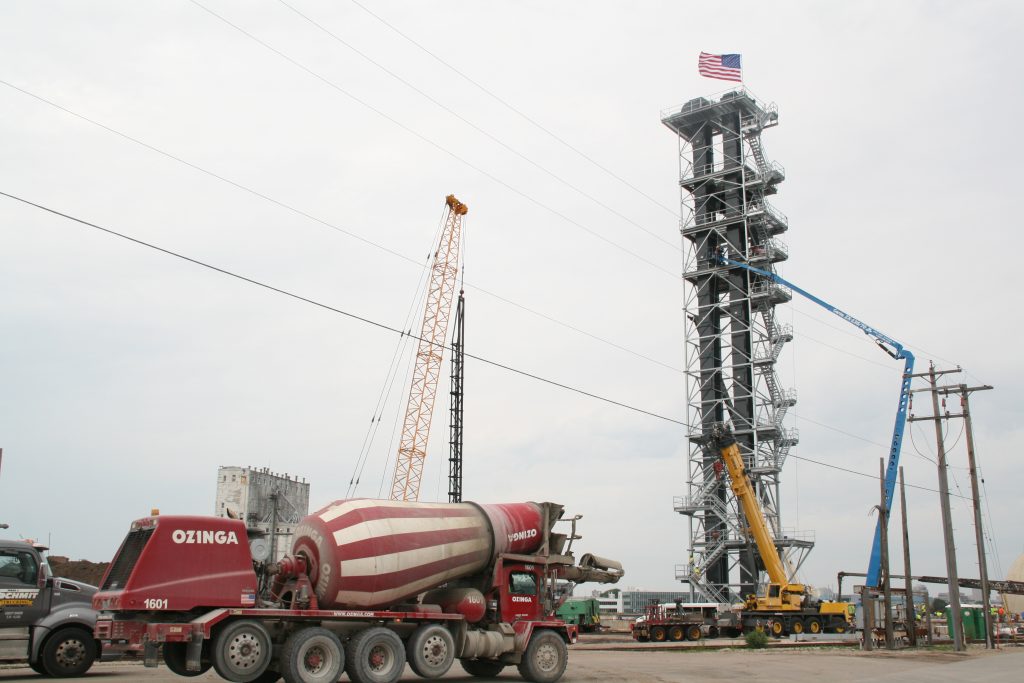
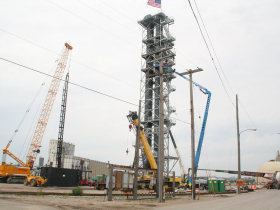
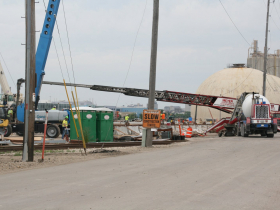
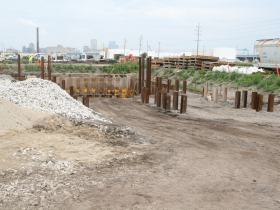
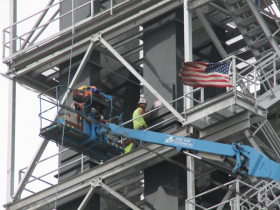
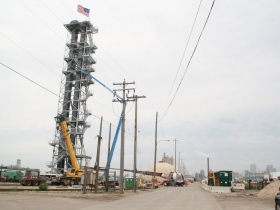
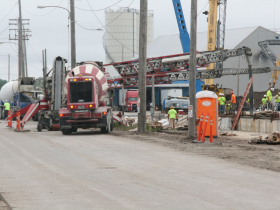
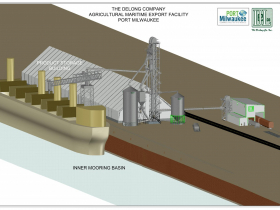
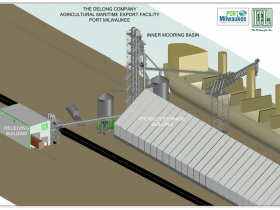
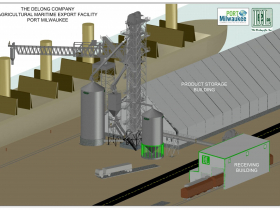




















This is such a great project. I am wondering when Republican lawmakers will file suit in court because somebody’s rights are being violated?
Wait, what? DeLong puts up only $7 million, the public puts up $28 million, and DeLong gets to own the facility. The Port’s total rent over 30 years is only a little more than half of what the City is contributing to building the facility, and the City has an option to buy it from DeLong if DeLong does not renew the lease in 30 years? What is the sales price in 30 years if the City wants to buy it?
The drawings do not show context around the site. Is there a reason that inbound and outbound product are not situated in 2 buildings on either side of the load/unload facilities?
It doesn’t seem efficient to send and retrieve so much product so far when most round trips could be cut in approximately half. Are there storage factors such as temperature and humidity control whose costs would be greater than the distance factor under a 2-building configuration? Ship position restrictions?
Otherwise, congratulations and good luck all around.
@Marty – If I understand your question, there is a ground-based unloading facility on the east side of the street because that is where the rail yard is (and space for trucks). The material will come in and then be stored in the building that fills the space between the street and water on the west side of the street (transported by an overhead conveyor system).
When a ship comes in, it will empty the building next to the water.